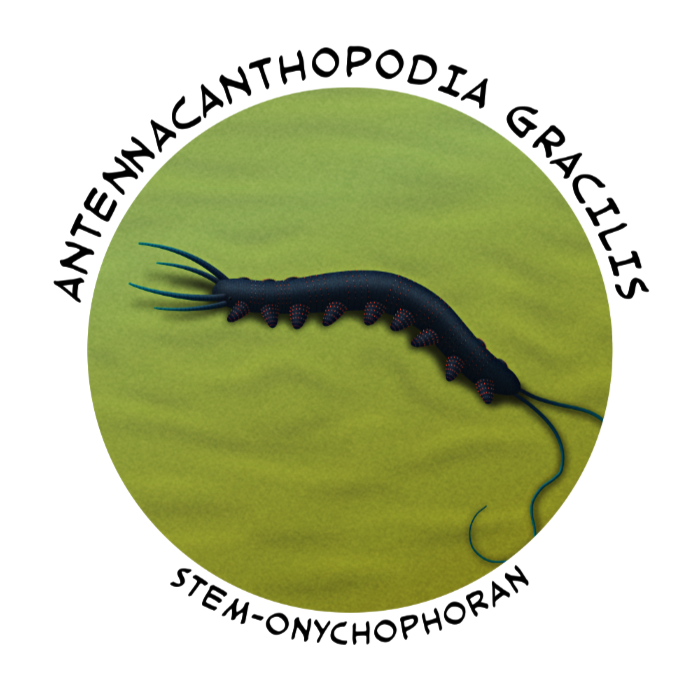Onychophorans, or “velvet worms”, are a small phylum of terrestrial worm-like panarthropods found in the tropics and temperate regions of the Southern Hemisphere, with around 200 known modern species. Resembling caterpillars, they have tubular segmented bodies, stubby clawed legs, and the unique ability to shoot jets of immobilizing glue-like slime at their prey.
It’s not clear when exactly in their evolutionary history velvet worms shifted from marine to living fully on land, but the oldest terrestrial onychophoran fossils come from the Carboniferous (~300 million years ago). And much like their cousins the tardigrades the ancestry of this group seems to trace all the way back to somewhere in the “evolutionary grade” of Cambrian lobopodians.

Antennacanthopodia gracilis was a very velvet-worm like lobopodian known from the Chinese Chengjiang fossil deposits (~518 million years ago). Around 1cm long (0.4″), it had two sets of antennae, nine pairs of stubby spiny legs, and a pair of long flexible whip-like appendages at its rear end. Unusually for a lobopodian it didn’t seem to have any claws, instead having thickened disc-shaped “pads” on the bottom of its feet.
It was probably a “stem” velvet worm, related to the ancestors of modern forms but not directly ancestral to them, giving us an idea of just how early the basic body plan for onychophorans became established, long before they ever stepped out onto the land.
